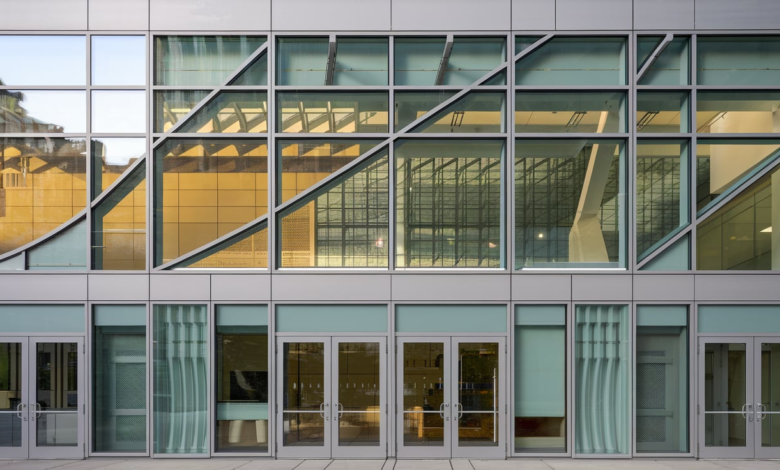Transforming Spaces: The Impact of UW Pop Health Glazing Used on Windows

The uw pop health glazing used on windows at the Hans Rosling Center for Population Health makes a big difference in how the building looks and works. This special glazing lets in natural light, making the inside of the building bright and welcoming. It also helps save energy, which is great for the environment and the people who work there.
Not only does the uw pop health glazing used on windows improve the building’s appearance, but it also shows how important design is in public health research. The glazing creates a comfortable space for researchers and visitors, helping everyone feel good while they are there. This design choice helps the center be a better place for studying and sharing ideas about health.
The Role of UW Pop Health Glazing Used on Windows in Modern Architecture
Modern architecture emphasizes the importance of light and open spaces. The uw pop health glazing used on windows is a great example of how design can improve a building. By using large glass panels, architects create an inviting look that attracts visitors. This design also encourages collaboration among researchers and the community.
The glazing system is not just about looks; it plays a crucial role in the building’s functionality. The innovative design helps regulate temperature and improves energy efficiency. This ensures that the building stays comfortable year-round. As a result, the Hans Rosling Center stands out as a model for future health facilities.
How UW Pop Health Glazing Used on Windows Enhances Energy Efficiency
Energy efficiency is vital in today’s world, and the uw pop health glazing used on windows plays a significant part in achieving this goal. The advanced glazing system reduces the amount of energy needed for heating and cooling. Here are some key benefits:
- Natural Light: By allowing sunlight in, the building uses less electricity for lighting.
- Insulation: The glazing helps keep the heat inside during winter and outside during summer.
- Sustainable Design: This energy-saving feature supports eco-friendly practices.
By focusing on energy efficiency, the center helps protect the environment while providing a comfortable space for researchers and visitors.
Creating Bright Spaces: The Benefits of UW Pop Health Glazing Used on Windows

Bright spaces can have a huge impact on our mood and productivity. The uw pop health glazing used on windows allows ample sunlight to fill the rooms, creating an uplifting atmosphere. Here are some benefits of bright spaces:
- Improved Mood: Natural light can boost happiness and reduce stress.
- Increased Productivity: People work better in bright environments.
- Better Health: Sunlight helps our bodies produce Vitamin D, which is essential for good health.
Having bright spaces in the Hans Rosling Center enhances the overall experience for everyone involved.
Durability Matters: Maintaining UW Pop Health Glazing Used on Windows
To keep the uw pop health glazing used on windows looking great, regular maintenance is essential. Here are some tips for keeping the glazing in top shape:
- Regular Cleaning: Cleaning the glass helps maintain clarity and appearance.
- Inspections: Regular checks ensure there are no cracks or damages.
- Repairs: Quick repairs can prevent further issues and extend the life of the glazing.
Proper maintenance ensures that the building remains functional and visually appealing for years to come.
Community Engagement: How UW Pop Health Glazing Used on Windows Affects Outreach
The uw pop health glazing used on windows not only enhances the building’s design but also encourages community engagement. The transparent nature of the glazing creates a welcoming atmosphere, inviting people to explore the center. This openness helps bridge the gap between researchers and the public, promoting collaboration and understanding.
The Hans Rosling Center often hosts events and workshops for the community. With bright and inviting spaces, visitors feel comfortable coming in to learn more about public health. This helps to raise awareness about important health issues and the research being conducted at the center. When the community sees the work being done, it fosters a sense of trust and partnership.
Additionally, the building’s design serves as a model for other institutions. By showcasing the benefits of innovative glazing, the center inspires others to consider similar designs. This ripple effect can lead to more buildings that prioritize health, energy efficiency, and community involvement.
A Closer Look at the Design of UW Pop Health Glazing Used on Windows
The design of the uw pop health glazing used on windows is both innovative and functional. Architects from The Miller Hull Partnership took great care in selecting materials that enhance the building’s aesthetic while serving practical purposes. The large glass windows not only let in light but also create an open feeling inside.
Here are some design elements that stand out:
- Sleek Lines: The modern look of the building attracts attention and represents cutting-edge research.
- Sustainable Materials: The use of eco-friendly materials helps reduce the building’s environmental impact.
- Thoughtful Layout: The arrangement of windows ensures that every room benefits from natural light.
These design choices work together to create a beautiful and functional space for public health research.
Future of Public Health Spaces: Trends in UW Pop Health Glazing Used on Windows
Looking ahead, the uw pop health glazing used on windows sets a trend for future public health buildings. As communities focus more on sustainability and well-being, the demand for innovative designs will grow. Here are some expected trends:
- Smart Glass Technology: Future glazing may include smart technology that adjusts transparency based on sunlight and temperature.
- Biophilic Design: Incorporating nature into design will become more popular, further enhancing well-being.
- Community-Centric Spaces: More buildings will focus on connecting with the community, similar to the Hans Rosling Center.
By adopting these trends, future public health spaces can better serve their communities while promoting health and sustainability.
The Importance of Natural Light: UW Pop Health Glazing Used on Windows

Natural light plays a vital role in our daily lives, and the uw pop health glazing used on windows brings that light into the Hans Rosling Center. Bright, sunlit spaces are linked to numerous benefits, from improving mood to enhancing concentration.
Here are some key reasons why natural light is essential:
- Boosts Mental Health: Exposure to sunlight can help reduce feelings of anxiety and depression.
- Enhances Learning: Studies show that natural light can improve focus and retention in educational settings.
- Promotes Social Interaction: Bright spaces encourage people to gather, share ideas, and collaborate.
The glazing in the Rosling Center not only allows light to flood in but also creates an inviting environment for research and community engagement.
FAQs
Q: What is UW Pop Health Glazing?
A: UW Pop Health Glazing refers to the special glass used on the windows of the Hans Rosling Center to improve energy efficiency and let in natural light.
Q: Why is natural light important in buildings?
A: Natural light helps people feel happier and more focused. It also reduces the need for artificial lighting, saving energy.
Q: How does glazing help the environment?
A: The glazing improves energy efficiency by keeping the building comfortable, which reduces energy consumption and lowers carbon footprints.
Q: Can the community visit the Hans Rosling Center?
A: Yes, the center welcomes the community for events and workshops to learn more about public health and research.
Q: Who designed the glazing for the Hans Rosling Center?
A: The glazing was designed by The Miller Hull Partnership, a well-known architecture firm that focuses on sustainable design.
Conclusion
In summary, the uw pop health glazing used on windows at the Hans Rosling Center makes a big difference for everyone who visits. It brings in natural light, which helps people feel happy and focused. This bright and welcoming space encourages people to learn more about health and support the important work happening inside. The glazing not only looks great but also helps save energy and protects the environment.
Looking to the future, the lessons learned from this center will inspire other buildings. More places will use similar designs to make them inviting and friendly for everyone. By focusing on light and openness, we can create better spaces for health and research. The Hans Rosling Center shows us how good design can help us all live healthier, happier lives.
